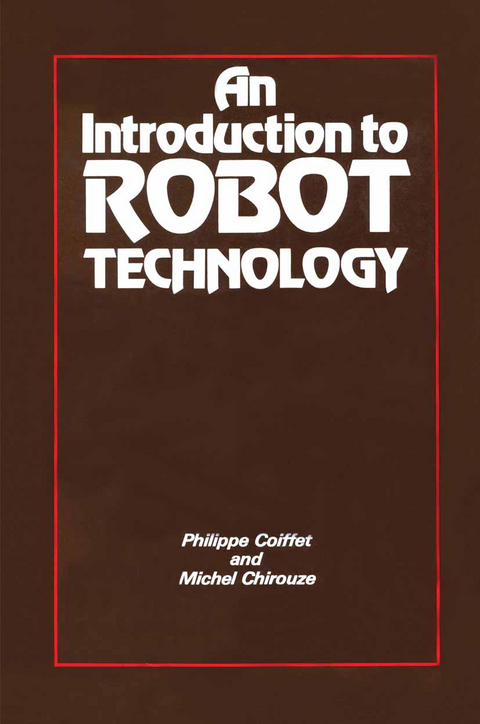
An Introduction to Robot Technology
Springer (Verlag)
9789401161022 (ISBN)
Robotics is now a well established field of endeavour both in industry and research laboratories. There is a danger that the word may be widely in areas where it is inappropriate, so knowing precisely what used even a robot is, how it is controlled and how it may be used in specific applications is of the highest importance. The authors are not only innovators in the development of robots but also highly respected educators. This book has been carefully com piled to crystallize, for the reader, the fundamentals of robot operation and application. The material carefully treads its path between achieving broad coverage and depth where it is needed. Industrialists, teachers and students alike will benefit from the book. Igor Aleksander July 1983 Chapter 1 Robotics: an introduction As a result of the great advances of the last few years many industrial processes have become largely automated, with the human operator playing an ever decreasing role. The fully automated and unmanned factory is probably now only a few decades away.
1Robotics: an introduction.- Areas of application of robotics.- The new industrial revolution.- The aim of this book.- 2Robots and robots in use.- Origin of the word ‘robot’.- Definition of the word ‘robot’.- Characteristic properties of a robot.- General structure of a robot.- The robot environment.- Task description.- Role of the computer.- Typical industrial robot.- Classification of robots.- Robot generations.- Existing robots and the robot market.- 3Representation of a robot.- Functional representation.- Graphical representation.- Arms: structures in use.- Structure of end effectors.- 4Degrees of freedom of a robot.- Degrees of freedom of a rigid object.- Degrees of freedom of a robot.- Degrees of freedom specific to a tool.- Degrees of freedom and mobility.- 5Basic principles of control.- Variables to be handled.- The main levels of control.- 6Control based on the geometrical model.- Geometrical model: a much Simplified robot model.- Geometrical or positional control.- 7Control based on the kinematic model.- Kinematic model: a simplified robot model.- Variational control.- Characteristics of kinematic control.- Models and dynamic control.- 8Actuator servocontrol.- Principles of servocontrol.- Mathematical study of a servo-system.- Specific practical problems involved in the use of a robot servo-system.- 9Robot actuators.- Pneumatic actuators.- Hydraulic actuators.- Servocontrolled hydraulic systems.- Electrical actuators.- Servocontrolled electrical motors.- Transmission systems.- Conclusions.- 10Internal sensors.- Movement or position sensors.- Speed sensors.- Stress sensors.- Acceleration sensors.- 11External sensors.- Applications of external sensors.- Tactile sensors.- Stress sensors.- Proximity sensors.- Visual sensors.- 12Computer control.-Analog-digital, digital-analog converters.- Other types of converter used in robotics.- The program.- Conclusions.- 13Robot training and trajectory generation.- Methods of recording trajectories.- Manual control used in training.- Trajectory generation.- Trajectories in the task space and in the articulated variable space.- Control languages.- Conclusions.- References.- 14Robot performance and standards.- What is robot performance?.- Task performance.- Human performance in robot control.- Economic performance.- Performance standards.- 15Robots in use.- Examples of uses.- End effector components.- Conclusions.- Use of matrix calculations.- Handling real term matrices: a summary.- Components of a vector in an orthogonal set of coordinates.- Transformation of coordinate set.- Specific examples useful for modelling and control of robots.- Inverse transformation.- Definitions and equations.- Working principles.- Motor with induction control.- Motor with armature control.- Problems associated with dynamic control.- Dynamic control.- Effects of gravitational force.
| Zusatzinfo | 198 p. |
|---|---|
| Verlagsort | Dordrecht |
| Sprache | englisch |
| Maße | 155 x 235 mm |
| Themenwelt | Naturwissenschaften ► Physik / Astronomie ► Allgemeines / Lexika |
| ISBN-13 | 9789401161022 / 9789401161022 |
| Zustand | Neuware |
| Informationen gemäß Produktsicherheitsverordnung (GPSR) | |
| Haben Sie eine Frage zum Produkt? |
aus dem Bereich


